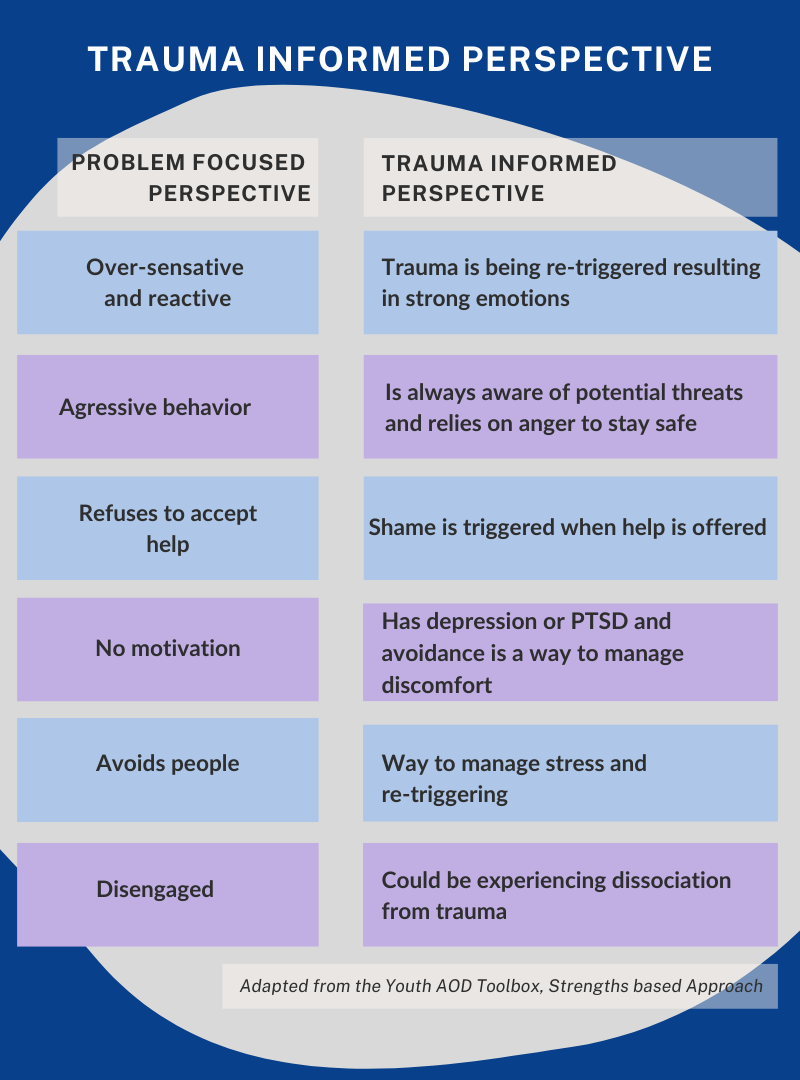Among mental health professionals, educators, social service providers and others there is a growing awareness of a need to understand the impact of trauma when working with adolescents and children. We know that household dysfunction, abuse, neglect, poverty and racism are all too common causes of trauma with research showing that 62% of 13 to 17-year-olds report having been exposed to at least one traumatic experience in their life.
Trauma-Informed Care is one response to this need. A trauma-informed approach shifts from a model of professionals asking the child “What’s wrong with you?” to one that asks, “What has happened to you?” It assumes that an individual is more likely than not to have a history of trauma and approaches the child with that awareness and a focus on empathy and healing.

In 2014, the Substance Abuse and Mental Health Services Administration published a guide to Trauma-Informed Care. That outlined the specific elements of this type of care:
- Realizing the widespread impact of trauma and understanding potential paths for recovery.
- Recognizing the signs and symptoms of trauma.
- Responding by fully integrating knowledge about trauma into care for the individual.
- Resisting re-traumatization.
When it comes to working with children these key elements translate into:
- Making the child feel both physically and psychologically safe.
- Building trust and connection.
- Becoming trauma aware and knowledgeable about the impact and consequences of traumatic experiences.
- Learning how to identify the signs of stress and associated behaviors to be able to respond with awareness and empathy.
- Encouraging open communication. Listening and responding with empathy.
- Helping them build resilience and wellbeing (typically through self-care and mindfulness exercises) as well as self-regulation skills.
- Supporting their existing strengths.
- Empowering them to have a voice in their healing by involving them in developing coping strategies.
- Partnering with others who care for the individual. (Teachers, parents, community organizations, etc.)
What Does it Look Like?
In recent years, a number of school districts have adopted a trauma-informed approach.
Trauma-informed teaching starts with an understanding of how trauma can impact learning and behavior. With this approach, educators think about what student behavior may be telling them. And they reflect on their teaching practices to find ways to better support students who may be experiencing trauma.
A trauma-informed learning environment is created by promoting the wellness of all students, ensuring they feel safe and supported physically, socially, emotionally and academically.


